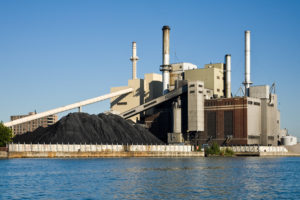ASTM C1709 provides a way to introduce alternative supplementary cementitious materials (ASCMs) into the marketplace. Supplementary cementitious materials include fly ash, slag cement, silica fume, and calcined clay. They can substitute for some of the portland cement in concrete. Used appropriately, they can enhance the properties of concrete while reducing its carbon footprint. ASTM has developed standards for each of these materials to lend confidence to the user that they are safe and effective.

However, as utilities shut down their coal-fired power plants in favor of clean-energy alternatives, fly ash supplies are already erratic, and they’re disappearing. On the other hand, fly ashes that don’t conform to ASTM C618 languish in stockpiles and retention ponds. These materials are not only a wasted resource, but also an environmental hazard. Is there any way to make use of them that isn’t just wishcycling?
This is where ASTM C1709 comes in. It lays out a test protocol for alternative supplementary cementitious materials–that is, those that don’t conform to ASTM’s standards–to protect and give confidence to the user. That is, ASTM C1709 promotes sustainability by expanding the use of waste materials to improve concrete performance. With more and more jurisdictions adopting CALGreen, it’s important to have a way to use marginal materials with confidence.
ASTM C1709 test protocol
The five stages of the test protocol are as follows.
I: Characterization of the material. As one would expect, this takes judgment on the part of the investigator. ASTM C1709 emphasizes the need to analyze for anything that could affect the hydration of the cement or the performance of the concrete.
II: Determination of suitable fineness. The finer the material, the more reactive it will be. Some materials may be too difficult to grind any finer. In that case, there’s no need to determine a suitable fineness–it is what it is.
III: Testing to specification C618 (fly ash and natural pozzolans), C989 (slag cement), or C1240 (silica fume). Each of these standards comprises a battery of chemical and physical requirements. In addition, ASTM C1709 includes tests for chlorides, soluble alkalis, and leachable heavy metals.
IV: Concrete performance tests. Depending on the intended application for the ASCM, concrete mixture proportions spanning a range of ASCM content and other variables must be tested for the desired properties. For example, concrete for an exterior walkway in the Midwest would need to withstand cycles of freezing and thawing and abrasion from snowplows. If the local aggregate is susceptible to alkali-silica reaction, the ASCM would need to control excessive expansions.
V: Field trials and long-term performance and durability. Once the material demonstrates acceptable performance in the laboratory, it must be tested in the field. At least three field evaluations of at least one year’s duration are required. If desired, these field tests may be concurrent.
For a discussion of how this process works in practice, click here.
